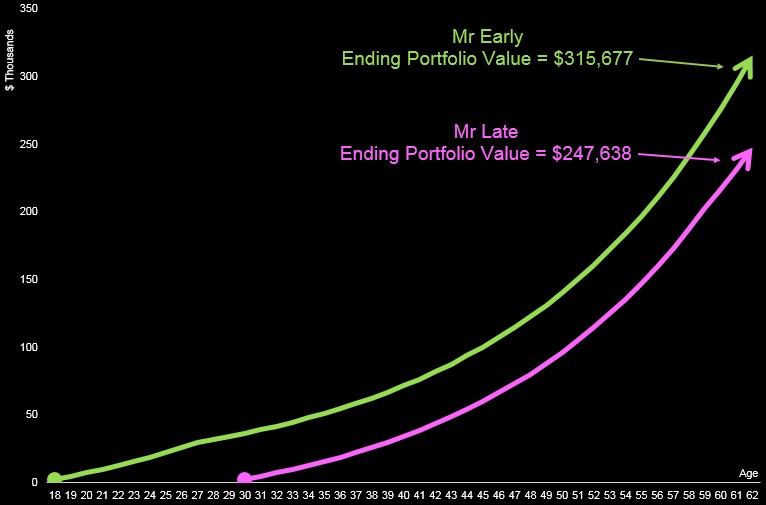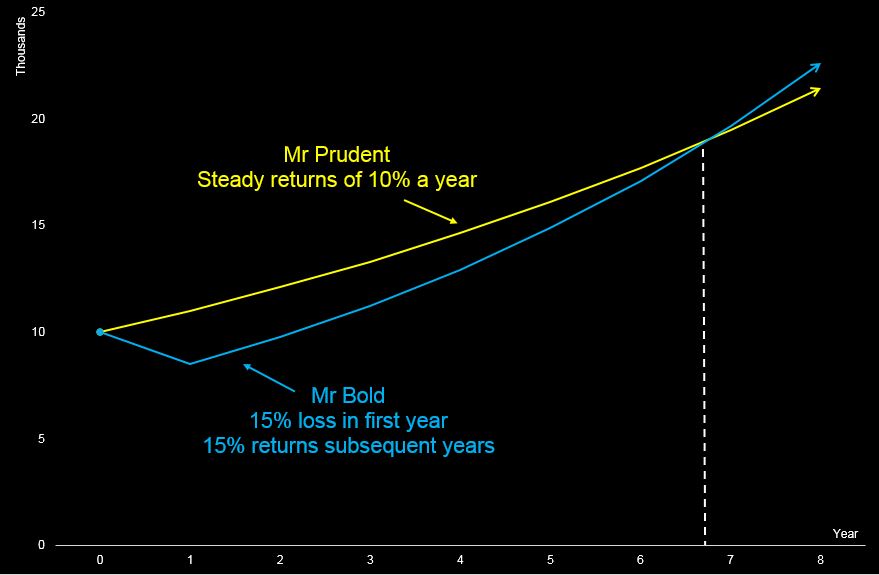Pilot Project

Tan Chek Ann, Senior CFD Dealer
Published On: 4 May 2018 | 5:00 PM
Hello everybody.
In 2018, I thought I’ll do something different that ties in with my New Year Resolutions. General reading identifies three main components to a meaningful work: Autonomy, Value add to bigger society and Growth in skillsets. Being a typical money-faced Singaporean, I add in a fourth component: Ability to make money (and enjoy while doing that).
Now in 2018, I am taking on a new role and with blessings from management, I am able to start writing this column as a side project which encompasses all three main components mentioned above and the fourth!
The topic that I’ll write about is Financial Literacy. Through these columns, I will present ideas on HOW to invest your monies along with the maths and science behind it. Coming from CFD department, I will obviously be pressured also to explore speculative trading ideas and associated due diligence that accompanies every trade. On days where I feel lazy, I may present financial trivia that serves to buy myself time (do you know what is the pick and shovel concept?).
At this point, I am reminded of the Parable of the Sower (google it):
A bag of seeds is scattered on four different grounds: the hard ground which prevents growth, the stony ground which doesn’t allow plant to take root, the thorny ground which allows growth but chokes life out of the plant thereafter, and the good ground which produces much fruit.
On which ground is your portfolio being built on? Are you reaping the fruits of your labour?
To start us off on even footing, here are some guiding principles to making money that should be applicable to all readers (regardless whether you have a long or short horizon).
Start early, compound your returns
I believe compound interest is part of PSLE maths syllabus. Assuming we have a capital of $10,00 and an annual compound interest rate of 10%, we get the following results:
| Year (n) | Bgn Capital | % Int | $ Int | End Capital |
| 1 | 10,000 | 10% | 1,000 | 11,000 |
| 2 | 11,000 | 10% | 1,100 | 12,100 |
| 3 | 12,100 | 10% | 1,210 | 13,310 |
| 4 | 13,310 | 10% | 1,331 | 14,641 |
| 5 | 14,641 | 10% | 1,464 | 16,105 |
| 6 | 16,105 | 10% | 1,611 | 17,716 |
| 7 | 17,716 | 10% | 1,772 | 19,487 |
| 8 | 19,487 | 10% | 1,949 | 21,436 |
| 9 | 21,436 | 10% | 2,144 | 23,579 |
| 10 | 23,579 | 10% | 2,358 | 25,937 |
As time (n) passes, we collect interest ($ Int) to be included into our capital (End Cap), which will be used to generate even higher interest the following year. Notice that the dollar interest ($ Int) increases exponentially over time and when plotted out, is a upward sloping curve.
The same concept applies to growing your monies. Suppose we have Mr Early and Mr Late. Since army at age 18, Mr Early has been saving $2000/yr and kept this up for 10 years. Mr Late only took this saving thing seriously when he was 30 and then he was very serious about it, saving $2000/yr for 30 years. Both invested in an index ETF generating 7% a year.
When both of them reaches minimum retirement age of 62, whose pockets will be deeper?
Reviewing the figures:
Mr Early invested a total of $20,000 from 18 to 27. ($2,000 a year for 10 years)
Mr Late invested a total of $60,000 from 30 to 59. ($2,000 a year for 30 years)
7% return a year
Plugging the figures into excel, we get:

Despite saving for three times more, Mr Late’s portfolio never once caught up with Mr Early! All Mr Early did was just starting early and let compound returns work its magic.
We all know the characters are fictional and the illustration hypothetical. The variables can be calibrated to create other scenarios. However in all of them, the fact remains: The mathematics behind compounded returns is real. And it pays to start early. You only need time and patience and you can start doing it today!
Albert Einstein went as far to saying: “Compound interest is the eighth wonder of the world. He who understands it, earns it. He who doesn’t, pays it.”
Demand a margin of safety
Margin of safety is a rather straightforward concept. We determine a share to be worth a certain price and attempt to pay a much lower price to buy it. The “discount” you get is the margin of safety. Because of the lower price we pay, we are better positioned against downside risks.
This may not be a fool proof method but it serves as a GREAT strategy and is widely preached upon.
For this illustration we make no assumptions and look purely at the balance sheet, with figures taken at face value. A company has assets of $100m. It has 10m shares outstanding so we determine the book value per share to be $10 ($100m/10m).
We can then apply a discount of 20% and pay only $8 for the share. This discount that we have serves to protect ourselves against any adverse conditions that may happen:
-
Inventory expires – check
-
Bad debt gets written off – check
-
Cash goes missing – check
-
Factory catches fire – …you get the point.
If you want to determine intrinsic value via earnings or cash flow which can be notoriously difficult to forecast, margin of safety serves to protect yourself against errors in estimates and cushion the blows. For more risky endeavors, you may demand an even larger margin of safety (50% anyone?) to protect yourself against the downsides.
Granted, this is not a very sexy approach and your trade may not go through many times. But remember our job here is to protect our capital and thereafter make money. If and when your trade gets done, you may sleep soundly at night knowing that knowing that your capital is protected.
Don’t lose money
This seems obvious enough. But still I’m going to write about it because losses are very painful. Here’s why:
% profits and losses are not equal. A share you bought had a 10% drop in price, declining from $10 to $9. For you to recover your money on the same trade, you will need the share price to increase from $9 back to $10, which is a 11.1% gain! That’s a difference of 1.1% in percentage terms! If this loss is uncontrolled and snowballs further to 20%, it will need to seek a 25% return to break even! A 30% loss needs a 43% return just to get back to the starting line before it makes any money.
If you have lost 50% of your portfolio value, you will need to score a 100% gain just to get back to where you were previously. How often do you net two or even three baggers to get back to being profitable?
Heres a table of how much % gain that is required to breakeven:
| % Loss | % Return required to breakeven | Difference in % |
| 10% | 11% | 1% |
| 20% | 25% | 5% |
| 30% | 43% | 13% |
| 50% | 100% | 50% |
| 90% | 900% | 810% |
| 100% | Permanent loss | N/A |
Another consideration is the opportunity cost of losing money.
Imagine Mr Prudent and Mr Bold starting out their investment journey together. Mr Prudent did the right thing and bought the right stuff, achieved a 10% return year on year. Mr Bold was more aggressive in his bets and lost 15% of his money in his first year. His daring attitude paid off from the second year onwards and he managed a superior 15% return year on year.
Here’s the value of their portfolio plotted out over time:

Although Mr Bold realised a higher return (15% vs 10%) compared to Mr Prudent, his portfolio value only caught up with Mr Prudent after six years! This because he suffered a loss early on and lost an opportunity to compound his returns. So try not to lose money people, it is very painful.
So how now?
Putting things into perspective, making money is actually rather easy with this 5 simple steps:
1. Do the RIGHT thing, buy the RIGHT stuff
2. Do it early and compound your returns
3. Demand a margin of safety as a safeguard
4. Don’t lose money
5. ..?
Leave a comment
More Articles
Malaysia Election Part 2
As highlighted in the previous article, the run-up to the 14th general election (GE14) of Malaysia does not differ much from previous elections whereby Budget 2018 focuses on…
Malaysia Election Part 1
Malaysia is preparing for a general election. How will this affect the Malaysian economy? First, let us take a look at how the Malaysian Economy has transformed over the years.
Stock Market Crash?
Malaysia is preparing for a general election. How will this affect the Malaysian economy? First, let us take a look at how the Malaysian Economy has transformed over the years.




